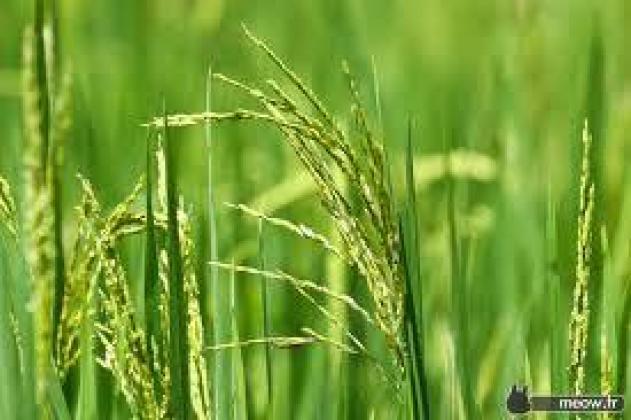
Bruce Schultz
Continual rainfall in the past few days has farmers worried about disease problems in their rice crop, an LSU AgCenter plant pathologist said at rice field days held in Jefferson Davis and Evangeline parishes.
“In the last week and a half, I’ve probably had 20 to 30 disease calls,” said LSU AgCenter plant pathologist Don Groth, speaking at the Evangeline Parish rice field day on June 1.
Groth also spoke about those concerns at the field day held the previous day in Fenton.
Groth urged farmers to scout their fields and to use fungicides on time, usually at the boot stage with 2- to 4-inch panicles in the head. But a treatment for blast disease should be applied at heading. “Once an epidemic gets going, it takes a lot more to stop it than if you catch it in the beginning,” he said.
Sheath blight is showing up in some fields, but occurrence is erratic. Fields where soybeans are planted in rotation with rice are more likely to have the disease than rice fields following crawfish, Groth said.
Blast disease has not been a problem so far. “If you see it, make sure everything is flooded,” he said.
Fungicide applications should be avoided immediately after or before a rain, he added.
AgCenter rice breeder Adam Famoso said a new genetics lab funded by the Louisiana Rice Research Board is providing new benefits with improvements in the foundation seed program. Varieties grown for seed at the AgCenter H. Rouse Caffey Rice Research Station can be screened to minimize off-types.
AgCenter rice breeder Steve Linscombe said last year’s flooding resulted in some rice seed with low vigor. Some of the plots at one of the field day locations were seeded with low-vigor seed, and those plots were more adversely affected by recent heavy rainfalls.
A Clearfield Jazzman line under development will have improved yield from previous versions of Jazzman. “I think this market will slowly continue to expand,” he said.
AgCenter rice specialist Dustin Harrell said the rice crop got off to a good start this year with a warm winter and spring that allowed early planting.
This year’s crop of 400,000 acres in Louisiana is about 8 percent lower than last year. “Everything was looking good until late April when we got significant rainfall,” he said.
About 4,000 acres of rice were lost in Louisiana because of floods, but rice acreage in Missouri and Arkansas had more significant losses, with more than 150,000 acres ruined in Arkansas.
Harrell said a new product to prevent nitrogen fertilizer losses will be available in 2018.
AgCenter entomologist Blake Wilson said a high percentage the for Louisiana rice acreage was treated with Dermacor, suggesting that heavy dependence on the product could lead to resistance problems.
No insecticides can be used in fields where crawfish are raised, but farmers can reduce stinkbugs by keeping levees and ditches mowed, he said.
The rice leaf miner is showing up this year, he said, but it poses little threat to yield.
AgCenter weed scientist Eric Webster said the herbicide benzobicyclon could be available in Louisiana next year as Rogue. The product is good for controlling aquatic weeds, but it does not have the broad spectrum weed control of another new product, Loyant, he said.
AgCenter plant pathologist Boyd Padgett said this year’s soybean crop looks good so far. “I’m impressed with the crop overall,” he said.
The U.S. Department of Agriculture estimates that 94 percent of the Louisiana soybean crop is planted, and 14 percent is blooming.
Farmers are concerned about how long soybeans can survive flooded conditions, Padgett said. Research indicates soybeans can survive 48 to 96 hours of flooding, but it depends on growth stage, temperature after drainage and water clarity.
AgCenter plant pathologist Trey Price said the soybean disease called taproot decline is caused by a fungus. LSU graduate students have several studies underway on the problem.
Taproot decline is unlikely in south Louisiana because the disease is found in fields where soybeans are planted in consecutive years, he said.
Work is ongoing to find a solution to Cercospora that is resistant to fungicides. “I think resistant varieties will be our ultimate solution to resistant Cercospora blight,” Price said.
